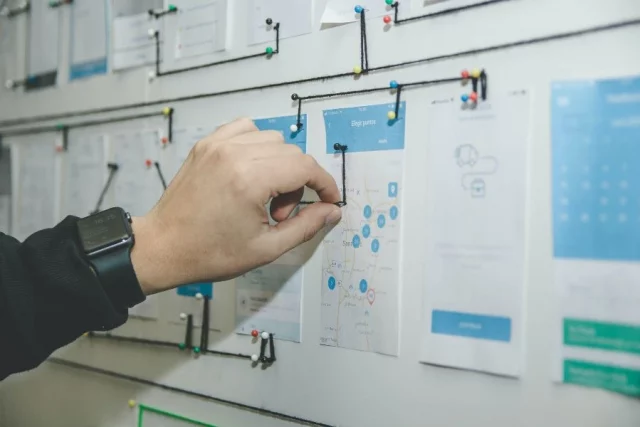Lean manufacturing, sometimes referred to as lean production or just lean, offers many benefits over traditional industrial practices. But there are some common wastes of lean manufacturing that can make your process less efficient and cost more money than it needs to—you can avoid these eight wastes by keeping your eyes open. Here are 10 wastes of lean manufacturing and how to eliminate them from your processes.
1. Overproduction
Everyone who’s ever tried to lose weight will tell you that it’s tough. When dieting, eating more calories than we burn is a recipe for fat gain—the leaner we want to get, the less energy we should take in. Overproduction on an assembly line means there’s a lot of useless inventory waiting to be used. The same concept applies to lean manufacturing: if you can plan so only what is needed is manufactured, wasted materials will be a thing of the past! What if you didn’t know what resources you would need until before they were needed? It would mean overproducing your processes and wasting time and money.
2. Waiting
This waste, also known as idle or waiting time, is a fundamental evil in any industry. It directly affects all other wastes because waiting usually leads to defects (and defects lead to rework). Employees tend to wait for their workstation when there’s no one around who can help them. At assembly lines, it takes less than 10 minutes for a line with 10 workers processing one product per minute to become idle if one employee takes an extended break.
3. Time-Wasting Tasks
Time-wasting tasks consume time but don’t do anything useful or productive. The waste of time in manufacturing is largely due to the delays in waiting for parts as they move along various routes through the assembly line. If a particular assembly step is not needed, it causes a waste of time and materials. With e-Crate System, a new innovative technology that allows for real-time tracking of parts and components, time-consuming tasks can be minimized. This system works by tagging each component with a unique identifier that can be scanned at various checkpoints throughout the assembly process, eliminating the need for manual scanning or searching for missing parts.
4. Material Handling
One of the most common wastes of lean manufacturing is material handling. Its simplest form is the movement of cast-off materials from one workstation to another. It’s like driving 150 miles on a gravel road (a process known as transportation), but you’re doing it every day, maybe even several times a day. The problem with this waste is that almost everything in the industry involves some form of material handling, from picking up and dropping off components to transporting finished products to their final destinations. If you’re not careful, you can move more stock than you need to—and the time spent moving stock is money down the drain. Industrial equipment, such as conveyors and robots, are used for moving stock. This equipment comes with pre-programmed or user-friendly processes. Processes that input and output automatic material handling systems include: -the vacuuming system.
5. Transportation
Transportation is often viewed as a necessary evil. It’s not, though: it can be reduced to almost nothing through the creative use of automation. Instead of manually transporting parts from one workstation to another, consider a conveyor belt or series of tubes. Just make sure you’re using conveyors designed for industrial environments if your product is even heavy—lightweight plastic trash cans won’t do you any good here. In general, you want your materials to move quickly and with little human intervention; slow material movement wastes time at every step in the process.
6. Inventory
The goal of a lean manufacturing strategy is to maximize efficiency. That’s why eliminating waste or anything that doesn’t add value is important in achieving its goals. One major source of waste in manufacturing is inventory — it costs you money whether you use it or not. So, how do you eliminate wasteful inventory? A good place to start is by identifying all your inventory sources. These include raw materials, work-in-progress (WIP), and finished goods (FG). You need a thorough understanding of where these supplies come from before you can know what needs to be eliminated.
7. Over-processing
Over-processing is an area where lean manufacturing shines. When workers do all the work to a certain degree, it takes little additional effort to increase production. This waste is often picked up by on-the-job training or PERT (Program Evaluation and Review Technique). As each product moves through the process, it should ideally get more and more streamlined; this process can be accomplished through tools such as Kanban systems.
8. Redundancies
Sometimes lean manufacturing gets confused with “too lean.” This happens when people worry so much about getting rid of the waste that they go overboard. If you’re not careful, you can eliminate any process that could be cut down or eliminated—even if it doesn’t present a problem in practice. Remember, the goal of any lean manufacturing system is to make decision-making easier and clearer—not harder!
9. Unutilized Talent
If you have a successful lean manufacturing process, you need to have good people. Smart people will find ways to do things faster, cheaper, and better. They’re your best asset in the manufacturing process and can make a great contribution—if they’re used well. Often, people become stuck in bad habits that waste their talent and cause them not to push themselves. One way to deal with this is through regular training programs. These strengthen employees’ skills and keep them up-to-date on new ways of doing things to always work at their top level.
10. Defects
Defects are a natural and necessary part of any manufacturing process. They cost money in scrap, rework, and compensatory time. Despite these costs, they shouldn’t be viewed as waste—as long as you’re aware of them. The trick is to control this waste, so it doesn’t become excessive. Each defect must be investigated and then eliminated if possible. If it can’t be eliminated, you should work to limit its effects through quality control.
Conclusion
Overall, the goal of lean manufacturing is to eliminate waste. To do this, you need to identify where that waste can be reduced or eliminated. The best way to do this is to use objective performance measurements. These measurements include both positive and negative aspects so that no process is exempt from review and analysis. Once you’ve done this, you can plan how you’re going to reduce or eliminate that waste from your processes or even (hopefully) eliminate it.














